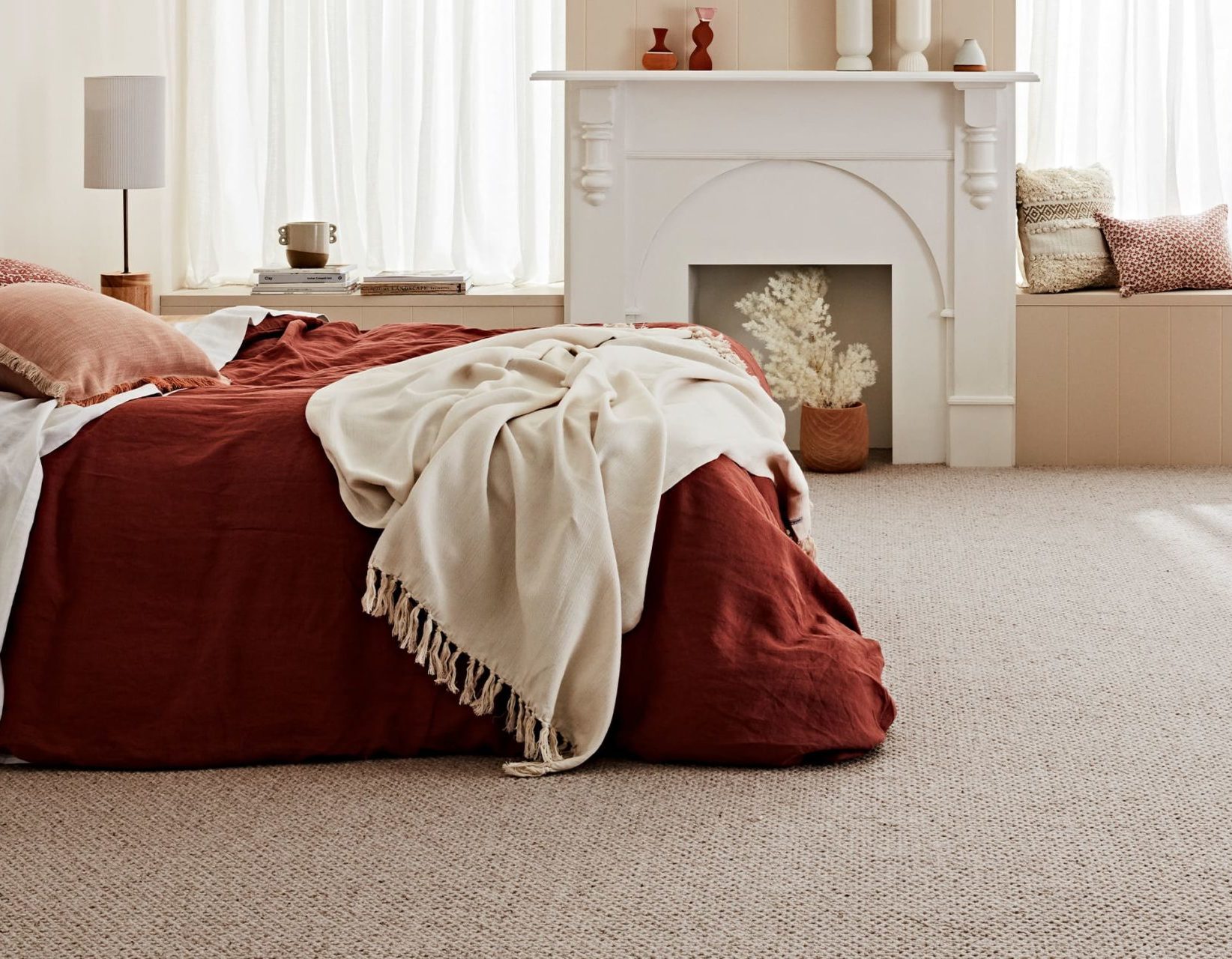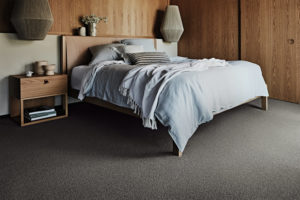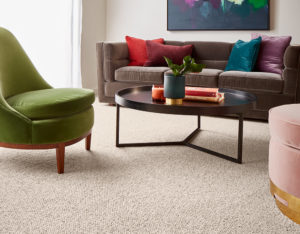

06 Jan Ultimate Guide to Wool Carpet
Wool carpet has quite a reputation in the world of carpeting for being the only 100% renewable carpet fibre. They are widely considered to be by far the most comfortable, luxurious and premium of all carpet types. Natural wool carpet is often used to increase the value of properties.
On the flip side, wool carpet commands the highest price out of all the carpet fibre types. The real question is… are they worth every dollar?
Today we’re going to take you through our ultimate guide to wool carpets, including every pro and con. That way you can decide for yourself whether this high-end luxurious carpeting material is the right fit for your personal and renovating needs.
What is Wool Carpet? Wool vs Synthetic
Wool carpets are very different from synthetic carpets such as polyester or nylon because they come from natural wool shorn from animals such as sheep, goats and even alpacas from the Australian and New Zealand countryside. Because wool isn’t man-made, it has very different properties than synthetic fibers.
Synthetic carpets on the other hand are derived from plastics which are turned into threads and tufted together, mimicking the original wool. There are many different synthetic carpets available in the market with various pros and cons which you can explore in our carpet ranges.
Wool can come in either a blended capacity or a pure wool carpet. Many blended wool variants are 80/20, meaning they are 80% wool. Pure wool carpet is 100% wool and is all natural fibre.
Are there any benefits of blended wool? No, it just reduces the material price slightly.


What are the Benefits of Wool Carpet?
As you might have already expected, there are many benefits that come with owning a wool carpet.
1) Softness & Comfort Underfoot
The most obvious benefit is that they are extremely soft underfoot. Walking on a wool carpet is a unique experience that is essentially impossible to replicate with other carpet fibres. No synthetic fibres will ever feel the way a wool carpet does.
Because of this softness, wool carpets are commonly installed in lounging rooms, bedrooms or living rooms. Wool carpets are often cited as an excellent way to improve the comfort of one’s home thanks to how soft they are.
2) Longevity – Shape Retention & Durability
Wool carpets are also extremely durable, but not in the same way that synthetic fibre carpets are. While solution dyed nylon is great at repelling dirt and stains, wool carpets are great with shape retention. Their shape won’t be ruined as easily after years of exposure to high traffic areas, making them a great choice not only for bedrooms but hallways and living areas as well.
3) Maintenance – Anti-Microbial
Furthermore, you may not have been aware of anti-microbial properties of wool. Because wool is a natural compound from animals, it also has shielding properties that was originally used to protect sheep and goat from bacteria. That same defense mechanism is active in wool carpets as well.
4) Temperature Insulation
One underrated benefit of wool carpets is their inherent insulation properties. The natural fibers of wool makes it easier to keep your home naturally warm during colder months. The wool fibers trap in heat much better than synthetic fibres. The highly insulative properties of wool is another reason why they are rated so highly for comfort, especially when having to deal with the cold temperatures.
This helps make wool carpets more environmentally friendly as you can save on heating costs during winter. Wool is also easy to grow, making it a sustainably renewable resource. So it is environmentally friendly from both a residential and production standpoint.
5) Fire Retardant
Another natural property of pure wool texture is that it is flame retardant. It is surprisingly hard for wool to catch on fire. This is a great benefit to have in the event that you accidentally drop a candle or any kind of fire were to start. In fact, 100% wool carpet can be installed in common areas of all multi-residential buildings with any type of carpet underlay whilst conforming to the National Construction Code (NCC) thanks to its low flammability.
6) Pure Wool is a Statement
Lets be honest – natural materials are always a statement in itself. Wool is considered the best looking of all carpet types. While looks and beauty are in the eye of the beholder, there’s no denying that many beholders choose wool.


What are the Disadvantages of a Wool Carpet?
While wool seems like the perfect carpet to own, its not without its own share of downsides. It is important to have a balanced understanding.
1) Wool Carpet is Expensive
The most obvious of which is that wool carpets can be quite expensive. They are among the most pricey carpet fibres on the market today. You certainly get what you pay for, as this luxury carpet material does not come cheap.
2) Initial Shedding
A smaller nuisance of wool carpeting is that it can be prone to shedding in the first 3 months after installation. This makes sense as the wool does originally come from animals, after all. While it doesn’t make too much of a mess, you will probably end up vacuuming more than usual. Luckily this goes away after the first 3 months.
3) Attracts Carpet Beetles & Moths
Arguably the worst feature of wool carpets is that they attract certain insects – moths and beetles particularly. Should these creatures enter your home, they will consider your pure wool carpet to be a feast. Treating your wool carpet with insecticide is highly recommended if you live in a climate that has these insects.
How Expensive Exactly Are Wool Carpets?
While wool carpets can be pricey, they aren’t completely unaffordable. Wool carpets tend to go up in price if they are pure rather than blended, and if the cut is thicker than average.
Another determining factor of wool price is the carpet gauge, which is a measurement of the distance that separates the yarns. The better the gauge, the more closely knit the yarns are, which equals a denser wool surface. This higher density or higher carpet gauge has a big impact on the final price.
You can expect wool carpets in Australia to cost as cheap as $80 per square meter and as much as $150 per square meter (fully installed with underlay) if you really want the most premium quality cut with the thickest fibres tufts.
If you are looking for new carpet, FloorVenue has been servicing Greater Sydney for over two decades running. We’d love the opportunity to advise and quote for your job. You can explore our full range of 100% natural wool carpet options!


Contact Floor Venue for your Remaining Wool Carpet Inquiries
Thank you for checking out Floor Venue’s ultimate guide to wool carpets. Hopefully you’ve learned a lot about what makes these carpets so valuable and luxurious to both Australian homes and worldwide.
Whilst our ultimate guides are very comprehensive, every situation, renovation and carpet is different. Feel free to contact FloorVenue if you have any further questions regarding wool carpet or more!




























